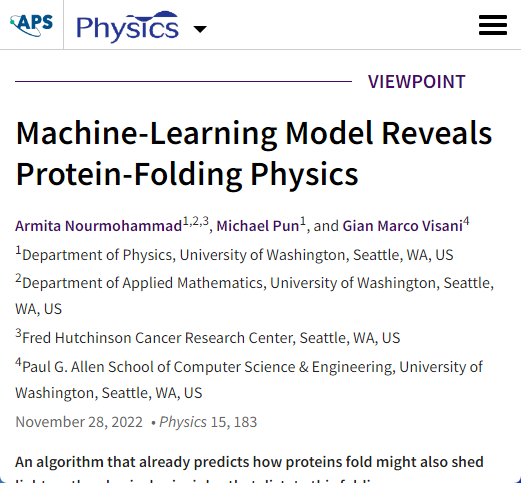Machine-Learning Model Reveals Protein-Folding Physics
A mathematical algorithm that predicts the folding of proteins could also shed light on physical principles that govern this folding.
The proteins in our bodies are responsible for everything from brain function to immunity. These proteins are encoded as long sequences called amino acids, which fold into complex 3D structures. Computer algorithms can simulate the amino-acid interactions which drive this folding. The resulting structures of proteins are difficult to determine. A machine-learning algorithm called AlphaFold [2] made a breakthrough in predicting the 3D structure from amino-acid sequences. James Roney and Sergey Ovchinnikov from Harvard University have now shown that AlphaFold can predict protein folding by analyzing the physical interactions between amino acids [3]. This suggests that machine-learning could be used to guide the understanding and modeling of complex physical processes.
It is very difficult to predict the 3D structure for a protein because there are so many possible folds that the amino-acids can take. AlphaFold’s computational search can be started from a template, which is a structure known for similar proteins. AlphaFold may also use the information on the evolution of amino acid sequences within the same family of proteins (proteins that have similar functions and likely folds). This information is useful because consistent evolutionary changes between pairs of amino acids may indicate that they directly interact even though their sequences are far apart [4, 5]. This information can be extracted by comparing the sequences of different protein families.
Source:
https://physics.aps.org/articles/v15/183

Leave a Reply